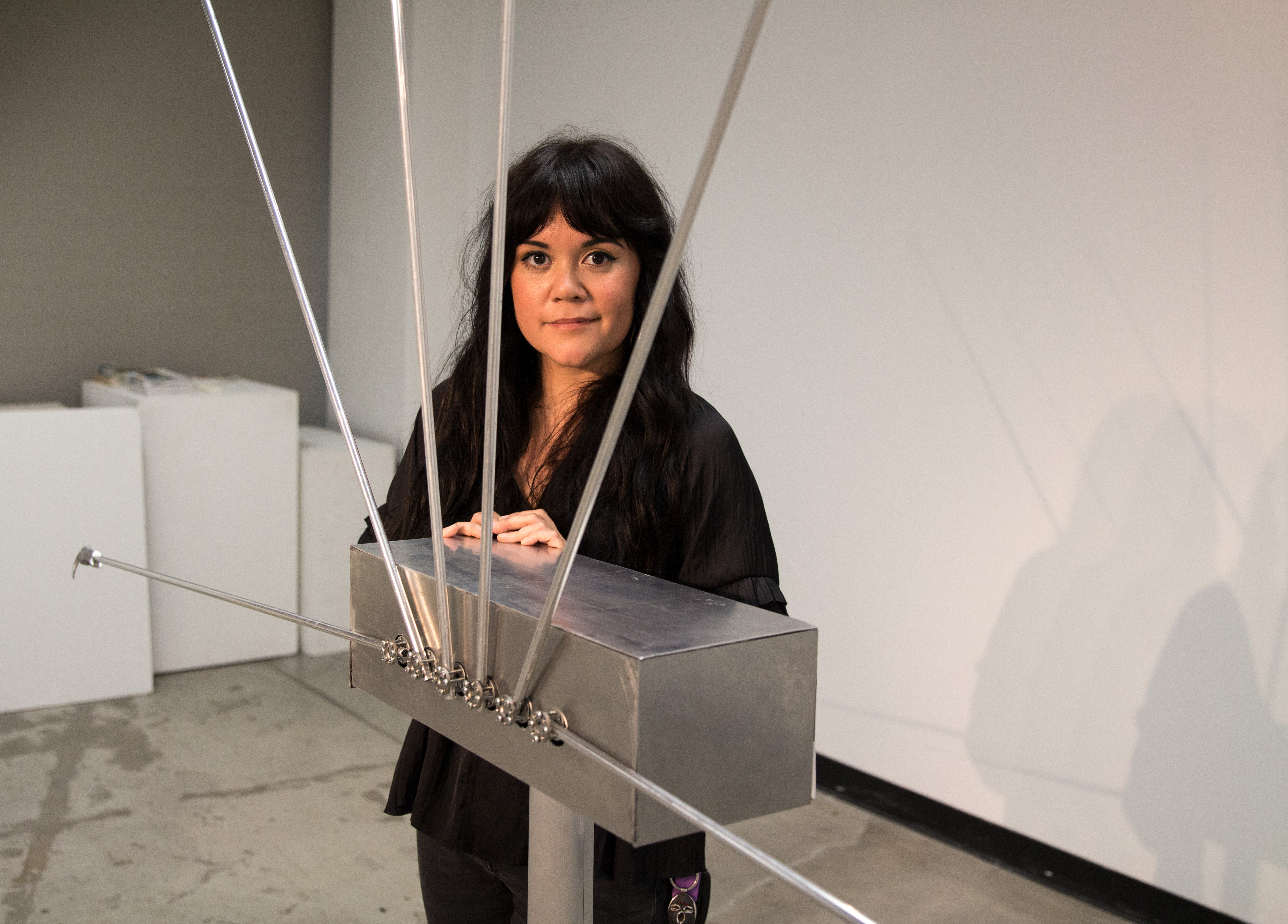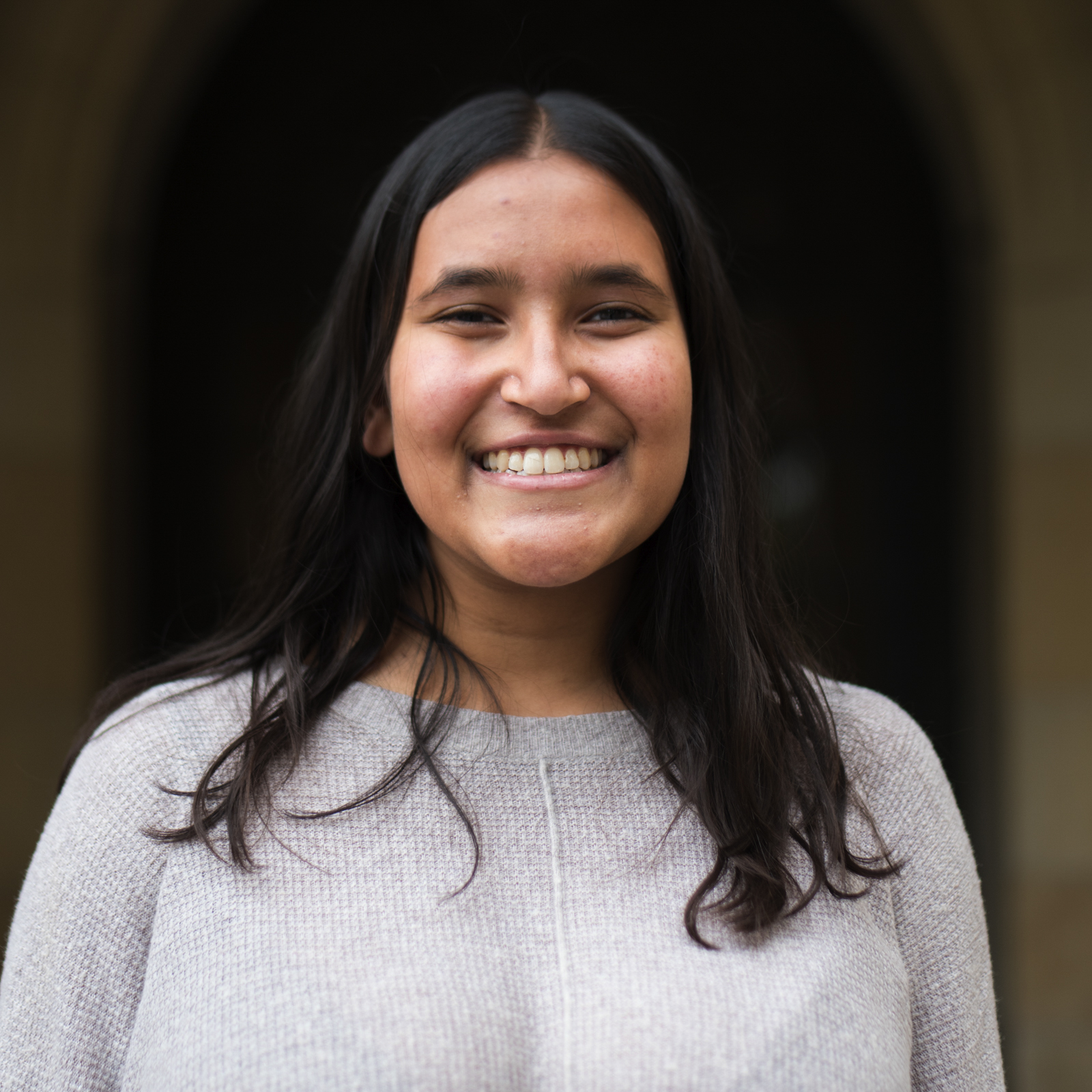UCLA art student creates pieces melding ancient myths, technology

Sarah Rosalena Brady, a graduate student in design media arts, will debut her exhibition “Coyotes in Two Directions” on Thursday at the California NanoSystems Institute. The exhibition includes three art pieces which feature 3D scans of coyote paws, eagle talons and rattlesnake tails. Brady said she hopes to explore the inequalities embedded within various power structures with her art. (Jenna Nicole Smith/Daily Bruin)
Coyotes in Two Directions
California NanoSystems Institute
Today
Free

By Anushka Jain
June 6, 2018 10:45 p.m.
Sarah Rosalena Brady drew inspiration from both artificial intelligence and ancient sculptures for her upcoming exhibition.
The design media arts graduate student will debut “Coyotes in Two Directions,” an art gallery featuring three technological works, Thursday at the California NanoSystems Institute at UCLA’s Art | Sci Center gallery. Brady’s kinetic art pieces, “The Animist,” “Coyotes in Two Directions” and “The Desert” incorporate aspects of hybrid creatures found in various myths from Southwest Native American philosophies, as she is of Native American descent. Brady said she hopes to merge science and culture by using modern technologies such as artificial intelligence and 3D scans to symbolize the inequalities of power structures throughout time in her exhibition.
“I’m really interested in thinking about characters that are powerful and significant in mythologies surrounding my background,” Brady said.
While brainstorming her various art projects, Brady said she focused primarily on the trickster, a mythological character that often takes the form of a deceiving shapeshifter. Brady said coyotes remind her of tricksters because of their shapeshifting survival skills within landscapes that have been changed by human colonization. The coyotes and tricksters represent adaption in threatened landscapes, Brady said.
“The definition for a trickster is this character that has weaved its way in and out of all these crazy power exchanges that go on in the world,” Brady said. “There are so many themes where colonization and power exchanges happen within this environment and I’m really interested in how hybrids, tricksters and shapeshifters can be this survival guide.”
In addition to the coyotes, Brady’s art also includes other animals such as eagles and rattlesnakes, as they represent strength and survival among long-standing systems of colonization. Brady used the 3D animal scans to create techno-hybrid forms, as mongrel forms are significant to Southwest Native American culture because they are seen as beacons of power. For example, Brady said she is fascinated by “Lion Man,” an over 30,000-year-old sculpture, featuring a human body with a lion’s head. Brady’s pieces “The Animist,” “Coyotes in Two Directions” and “The Desert” include 3D scans of eagle talons, coyote paws and rattlesnake tails, respectively.
Isla Hansen, a design media arts assistant professor, said the rattlesnake tail can be interpreted differently depending on its viewers, as it resembles both a plant and an animal. From previous glimpses into Brady’s other art and thesis work, Hansen said the piece is a symbol of both natural life and technological work as it merges animal species and 3D printing.
While some of the 3D scans represent the creatures to scale, Brady sometimes enlarges other scans and adds robotic arms to create dramatic effects and help the figures appear more intimidating and powerful.
“The Animist,” one of the three gallery pieces, is a kinetic sculpture, an art form with robotic parts like motors and sensors that invoke a sense of movement, Brady said. The piece contains six 3D-scanned eagle talons that engage in about 15 different gestures throughout the exhibition, showing the birdlike figure as shielding or protecting itself, she said. The piece represents biopolitics, which takes the administration of biological life and gives it power.
Brady said it was her Laguna Pueblo, Mexican and Irish descent that sparked her interest in postcolonialism. While she said she showcases the animals’ powerful forms, she also shows how the creatures have been subject to colonization and continue to be exploited today. For instance, eagles have become the symbolic bird of the United States and are threatened due to the species’ endangerment and recent hunting laws, Brady said.
Victoria Vesna, a design media arts professor and the director of the Art | Sci Center, said Brady’s artwork delves deeply into her Native American heritage. She said Brady explores how icons and symbols that were once prevalent in Native American culture have now lost some of their meaning due to colonization. Brady also forms her pieces as kinetic works and sculptures, ultimately connecting her cultural influences to her personal background to technological advancement, Vesna said. Brady has always been interested in using technology to design new forms of art merging different bodies, Vesna said.
“The artwork is not flat, sitting on the wall to be passively watched, but actually is interactive,” Vesna said.
In addition to symbolizing strength withstanding colonization, Brady said she hopes to also bring attention to the inequalities in power structures that still exist today in various fields of study. As a woman of color utilizing technology, a field itself dominated by white males, Brady said she is better able to convey her message through art and speak for the voices heard less in technology.
“I became really interested in using these tools for a different way, to kind of create new power symbols and new mythologies around this crazy world we live in now,” Brady said.


